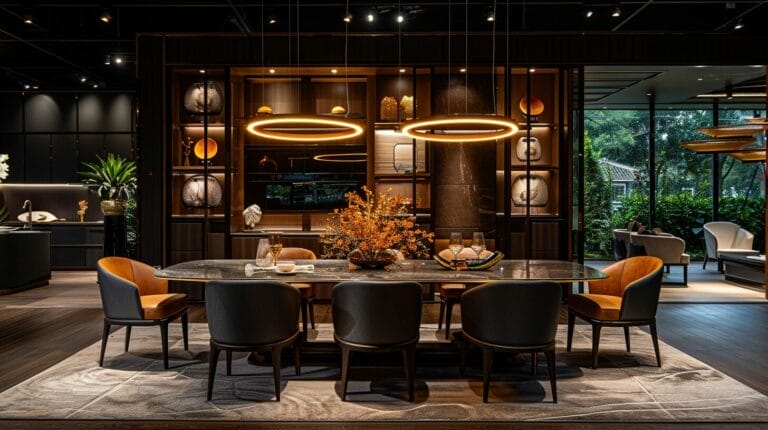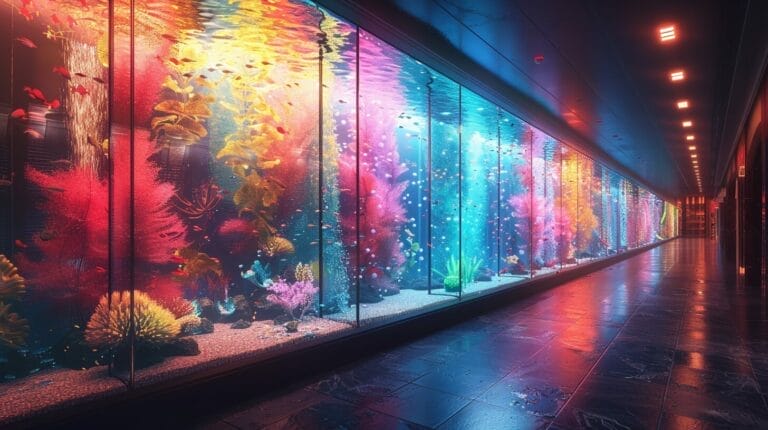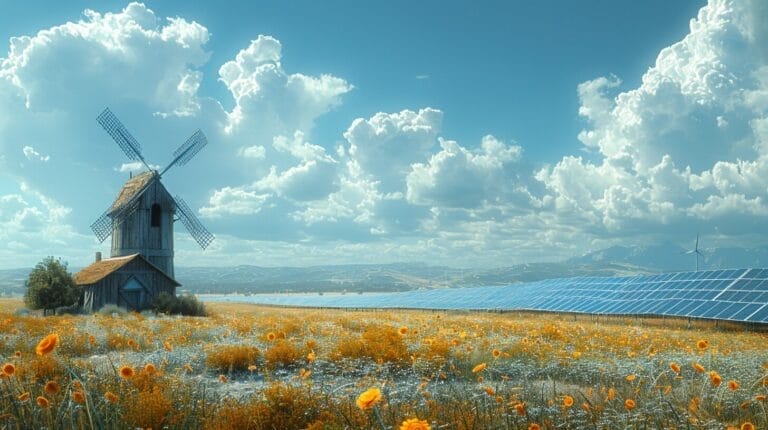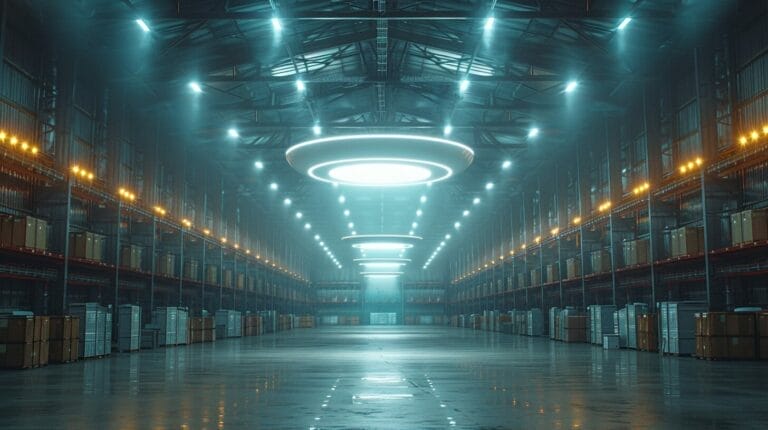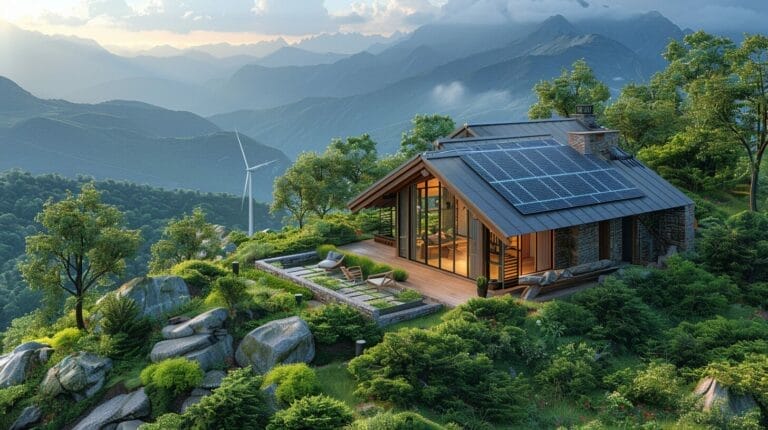What Type of Energy Does a Light Bulb Produce? Explained
Let’s talk about the types of energy a light bulb produces and why it matters for our daily lives. When we flip that switch, we’re not just illuminating a room; we’re also generating heat. Incandescent bulbs, for instance, are notorious for converting most of their electrical energy into heat rather than light. But what about LEDs and fluorescent lights? How do they differ in their energy production?
Understanding these differences can help us make smarter choices about the lighting in our homes and offices. So, what exactly goes on inside these bulbs?
Key Takeaways
- Light bulbs produce both light energy (visible light) and heat energy when electricity passes through them.
- Incandescent bulbs are inefficient, converting most electrical energy into heat rather than light.
- LEDs convert electrical energy primarily into light, with minimal heat production, making them highly energy-efficient.
- Fluorescent bulbs generate UV light, which is then converted to visible light, producing less heat compared to incandescent bulbs.
- Energy-efficient bulbs like LEDs and CFLs reduce electricity consumption, lower utility bills, and emit less heat.
Understanding the Basic Science Behind How Light Bulbs Work

To understand how light bulbs work, we need to explore the principle of incandescence and the role of electricity in powering these devices. When we talk about an incandescent bulb, we’re diving into the fascinating science of converting electrical energy into visible light. Inside the bulb, there’s a filament, usually made of tungsten, that plays an important role.
When an electric current passes through the filament, it gets heated to a very high temperature. This intense heat causes the filament to glow, emitting light waves that illuminate our surroundings. This process, known as incandescence, is the core mechanism behind traditional light bulbs.
However, it’s not the most energy-efficient method, as a significant portion of the electricity is wasted as heat rather than light.
As we aim for energy conservation and environmental protection, it’s essential to acknowledge the limitations of incandescent bulbs. While they provide warm, familiar lighting, their inefficiency has led to the development of alternatives like LEDs and CFLs, which offer better performance and reduced energy consumption.
Identifying the Types of Energy a Light Bulb Produces

Light bulbs primarily produce two types of energy: light and heat. When we explore different types of bulbs, we find that incandescent light bulbs, halogen bulbs, fluorescent bulbs, and LED bulbs each have unique characteristics regarding energy production.
Incandescent light bulbs are known for their simplicity but are notorious for their inefficiency. They convert most of their electrical energy into heat rather than light, resulting in low luminous efficacy. Halogen bulbs, a slightly improved version, offer better luminous efficacy due to a higher operating temperature, but they still produce a notable amount of heat.
Fluorescent bulbs, on the other hand, use a different mechanism entirely. They excite mercury vapor to produce ultraviolet light, which then gets converted into visible light by a phosphor coating. This process significantly enhances luminous efficacy compared to incandescent bulbs, though some energy is still lost as heat.
LED bulbs are the true game-changers. They excel in converting electrical energy into light with minimal heat production, boasting superior luminous efficacy. This efficiency stems from their ability to directly convert electrical energy into photons through electroluminescence, making them the preferred choice for modern, energy-conscious applications.
Why Do Light Bulbs Get Hot: Unveiling the Heat Energy Produced

When we flip the switch, the heat we feel from a light bulb is a direct result of the electrical energy being converted into thermal energy. This process isn’t just about lighting up a room; it involves both light energy and heat production.
Traditional incandescent bulbs, for instance, are notorious for their inefficiency—only about 10% of the electrical energy converts to light energy, while the rest transforms into heat. This significant heat dissipation can raise safety concerns, especially in enclosed fixtures or near flammable materials.
We see a different story with modern lighting solutions like LEDs. These bulbs are designed to maximize brightness with minimal heat production, thanks to their efficient energy conversion mechanisms. LEDs dissipate heat through heat sinks, allowing them to stay cooler and safer to touch.
In terms of safety, understanding heat production is vital. Overheated bulbs can pose fire hazards or even damage the light fixture itself. Innovators are actively working on enhancing heat dissipation technologies to improve both the brightness and safety of our lighting solutions.
Brighter Naturally: The Visible Light Produced by Bulbs

We often marvel at how light bulbs illuminate our spaces, but understanding the visible light they produce reveals fascinating insights into their design and functionality. At the heart of a standard incandescent bulb, a tungsten filament acts as the light source. When electricity passes through, the filament heats up to a high temperature, emitting visible light. This process, though efficient in simplicity, produces a relatively low amount of lumens per watt, making it less essential.
In contrast, halogen lamps improve upon this by filling the bulb with a halogen gas, which allows the tungsten filament to burn brighter and longer. This not only produces a whiter, more natural light but also increases the lumens per watt ratio, making halogen lamps a step toward better energy efficiency.
Understanding the science of luminescence helps us appreciate the spectrum of light emitted by these bulbs. The color temperature of the light can range from warm yellows to cool blues, affecting how we perceive spaces. Lumens play an important role in measuring light output, giving us a quantifiable way to compare brightness across different types of bulbs. By exploring these aspects, we can make more informed choices about the lighting solutions we use in our innovative environments.
Making the Switch: The Advantages of Energy-Efficient Light Bulbs

As we’ve explored the visible light produced by various types of bulbs, it’s clear that switching to energy-efficient options like LEDs and CFLs offers substantial advantages. To begin with, energy-efficient bulbs consume far less electricity compared to traditional incandescent bulbs. LEDs, for instance, use up to 80% less energy while delivering the same amount of light. CFLs also outperform incandescent bulbs, using about 70% less energy.
By reducing our electricity consumption, we not only lower our utility bills but also contribute to a greener environment. Less energy usage means fewer greenhouse gas emissions from power plants, helping mitigate climate change. It’s a simple switch with a profound impact on our planet.
Additionally, energy-efficient bulbs have a longer lifespan. LEDs can last up to 25,000 hours, significantly outlasting incandescent bulbs, which typically last around 1,000 hours. This longevity translates to fewer replacements and less waste, further benefiting the environment.
Let’s not forget the long-term cost benefits. While the initial investment in energy-efficient bulbs might be higher, the savings on energy bills and replacement costs make them a smart financial choice. Embracing LEDs and CFLs aligns with both innovation and sustainability, driving us towards a brighter, greener future.
Conclusion
To sum up, we’ve delved into the various types of energy light bulbs produce, focusing on both heat and light. Incandescent and halogen bulbs generate a lot of heat, while fluorescent and especially LED bulbs are more efficient, producing more light with less heat.
By switching to energy-efficient bulbs like LEDs, we can enjoy brighter, cooler, and more sustainable lighting. Let’s make the smart choice for our homes and the environment.
Frequently Asked Questions
What type of energy does a light bulb produce?
A light bulb produces light energy when electricity passes through the filament, causing it to glow and emit light.
How does a LED light bulb differ from traditional incandescent bulbs?
LED light bulbs differ from traditional incandescent bulbs in that they use light-emitting diodes to produce light, rather than a glowing filament. LED bulbs are more energy-efficient and have a longer lifespan.
What is the significance of wattage in light bulbs?
Wattage indicates the power consumption of a light bulb, with higher wattage bulbs producing brighter light. It is important to choose the appropriate wattage depending on the intended use and brightness needed.
Who is Thomas Alva Edison and what is his connection to light bulbs?
Thomas Alva Edison is credited with inventing the first commercially practical incandescent light bulb in 1879. His work revolutionized the way we illuminate our homes and spaces.
Why do light bulbs have a glass enclosure?
Light bulbs are enclosed in glass to create a vacuum or fill it with inert gases like argon to prevent the filament from burning too quickly. The glass enclosure also helps to protect the filament and maintain the proper conditions for light production.


